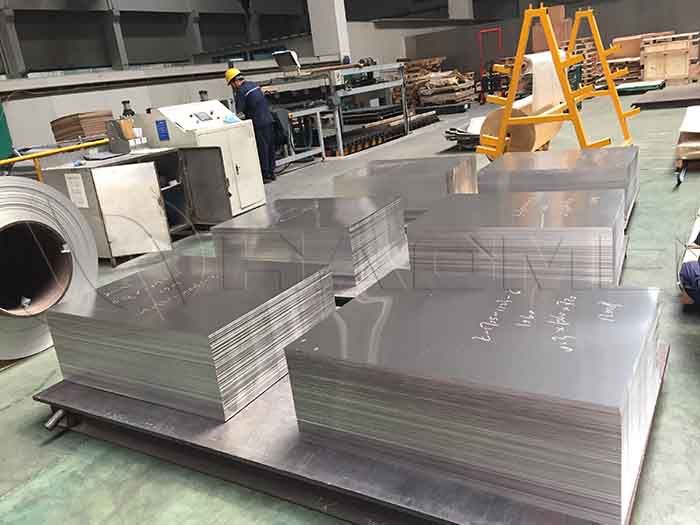The Corrosion Resistance Performance of Aluminum Marine 5083
As a new type of lightweight alloy structural material, aluminum marine 5083 has excellent properties such as low density, good corrosion resistance, strong compression resistance and easy processing,etc. It is widely used in ships, machinery manufacturing, aviation, aerospace and automotive fields.
In the marine environment, aluminum-magnesium alloys are prone to corrosion, which will lead to faster crack propagation rate in ship structures and shorten the fatigue life of ships. How about the corrosion resistance performance of 5083 aluminum sheet?

The corrosion behavior of 5083 marine grade aluminum sheet in different NaCl solutions is studied by scanning electrochemical microscopy. The corrosion mechanism of 5083 aluminum-magnesium alloy in different concentrations of NaCl solution is explored by electrochemical testing techniques such as potentiodynamic polarization curve, electrochemical impedance spectroscopy, and bode spectrum, and the effect of NaCl concentration on the corrosion process of the alloy is analyzed.
The corrosion system of 5083 marine grade aluminum in solution is a passivation system. As the concentration of NaCl solution increases, the potential shifts positively, the corrosion potential increases first and then decreases, and its breakdown potential and passivation current density gradually decrease. The corrosion resistance of 5083 aluminum become poor and its corrosion rate accelerates.
With the increase of NaCl concentration, there is only one capacitive reactance arc in the electrochemical impedance spectrum, and the capacitive reactance arc shows a shrinking trend, the corresponding impedance decreases, the phase angle increases, and the thickness of the passivation film decreases. The corrosion damage appears.
There is strong activating Cl- in the solution, which will damage the oxide film on the surface of the alloy, gradually replace the OH- in the corrosion product Al(OH)3, and generate a new corrosion product AlCl3.









